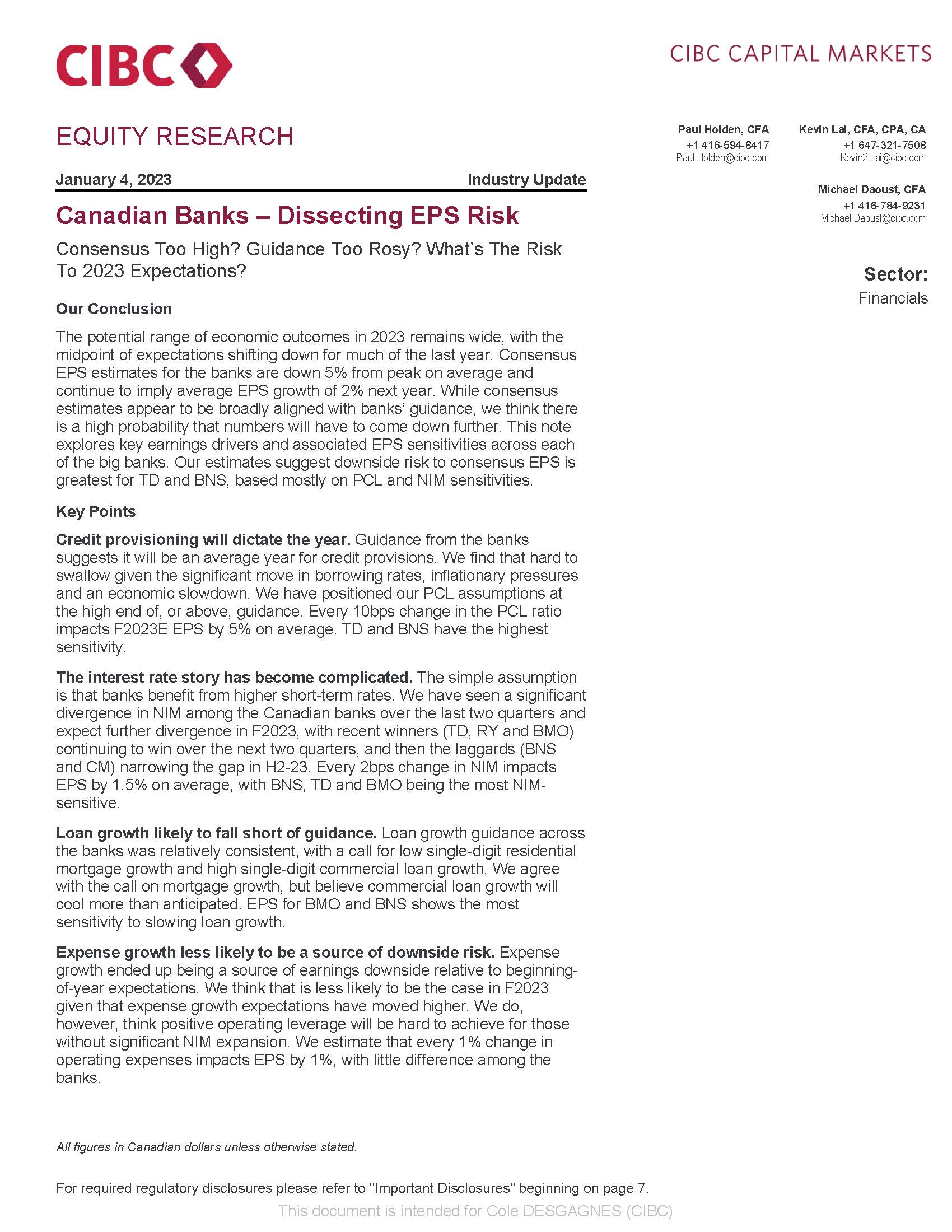The JJM Investment Group
January 09, 2023
View from the Street: Canadian Banks - Dissecting Earnings per Share, or EPS, Risk
Are analyst earnings estimates too high? Bank executive guidance too rosy? What’s the risk to 2023 expectations?
Conclusion from Paul Holden
The potential range of economic outcomes in 2023 remains wide, with the midpoint of expectations shifting down for much of the last year. Consensus EPS estimates for the banks are down 5% from peak on average and continue to imply average EPS growth of 2% next year. While consensus estimates appear to be broadly aligned with banks’ guidance, we think there is a high probability that numbers will have to come down further. This note explores key earnings drivers and associated EPS sensitivities across each of the big banks. Our estimates suggest downside risk to consensus EPS is greatest for TD and BNS, based mostly on PCL and NIM sensitivities.
Please feel free to read Paul’s more detailed remarks in his January 4th report (below). We list below, for your easy reference, a glossary of terms.
Bank stock symbols
BMO: Bank of Montreal
BNS: Bank of Nova Scotia
CM: CIBC
NA: National Bank
RY: Royal Bank
TD: Toronto-Dominion Bank
Glossary of terms
ACL: allowance for credit losses
CET1: common equity tier 1
CMRR: committed monthly recurring revenue
EPS: earnings per share
FQ2: fiscal quarter 2
LTM: last twelve months
NCIB: normal-course issuer bid
NII: net interest income
NIM: net interest margin
NIR: net interest rate
NSFR: net stable funding ratio
P&C banking: personal & commercial banking
P/BV: price-to-book ratio/value
PCL ratio: provision for credit losses
PTPP: pre-tax pre-provision
Q/Q: quarter over quarter
ROE: return on equity
Y/Y: year over year





